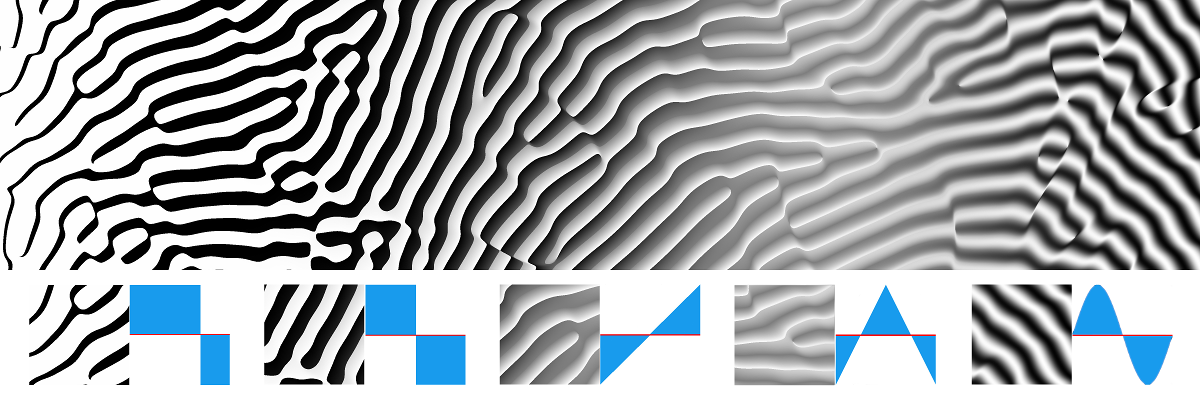Section: New Results
Texture synthesis
Procedural Phasor Noise
Participants : Thibault Tricard, Semyon Efremov, Cédric Zanni, Fabrice Neyret, Jonàs Martínez, Sylvain Lefebvre.
Procedural pattern synthesis is a fundamental tool of Computer Graphics, ubiquitous in games and special effects. By calling a single procedure in every pixel – or voxel – large quantities of details are generated at low cost, enhancing textures, producing complex structures within and along surfaces. Such procedures are typically implemented as pixel shaders. We propose a novel procedural pattern synthesis technique that exhibits desirable properties for modeling highly contrasted patterns, that are especially well suited to produce surface and microstructure details. In particular, our synthesizer affords for a precise control over the profile, orientation and distribution of the produced stochastic patterns, while allowing to grade all these parameters spatially. Our technique defines a stochastic smooth phase field – a phasor noise – that is then fed into a periodic function (e.g. a sine wave), producing an oscillating field with prescribed main frequencies and preserved contrast oscillations. In addition, the profile of each oscillation is directly controllable as shown Figure 2. Our technique builds upon a reformulation of Gabor noise in terms of a phasor field that affords for a clear separation between local intensity and phase. Applications range from texturing to modeling surface displacements, as well as multi-material microstructures in the context of additive manufacturing.
This paper was published in ACM TOG [6] and presented at Siggraph 2019.
|
Making Gabor Noise Fast and Normalized
Participants : Vincent Tavernier, Fabrice Neyret, Romain Vergne, Joëlle Thollot.
Gabor Noise is a powerful procedural texture synthesis technique, but it has two major drawbacks: It is costly due to the high required splat density and not always predictable because properties of instances can differ from those of the process. We bench performance and quality using alternatives for each Gabor Noise ingredient: point distribution, kernel weighting and kernel shape. For this, we introduce 3 objective criteria to measure process convergence, process stationarity, and instance stationarity. We show that minor implementation changes allow for 17-24 speed-up with same or better quality.
This paper has been presented at Eurographics-short 2019 [11].



